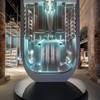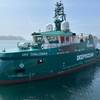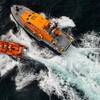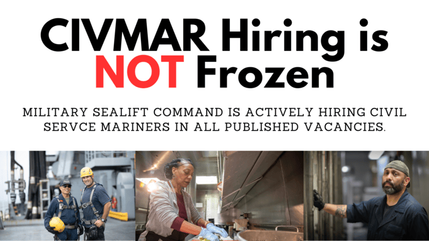Feature: The Corrosion Control Challenge
Last year Germanischer Lloyd and Mühlhan sponsored a Surface Protection Symposium in October in Lübeck, dealing with the topic of value retention in the shipping industry. The outcome was a lively exchange of ideas among shipowners, coating material manufacturers and surface protection experts. Up-to-date findings from research were discussed with the same vitality as problems from workaday practice. This report provides an overview of the events involved.
After Dr. Richter from Germanischer Lloyd had welcomed those attending, Mr. Harms — also from Germanischer Lloyd — described both the development and current status of international stipulations for the assessment of corrosion in water ballast tanks, including the "Unified Requirement Z7" (1990) from the International Association of Classification Societies. He emphasized the negative consequences which arise when a tank coating is classified as "poor". In that case the water ballast tanks must be inspected each year by a classification society, resulting in a substantial operational disadvantage to the owner. In the process Mr. Harms also disclosed the criteria for assessing coatings and illustrated the visual benchmark used in assessing to what percentage the surface area displays coating material failure or intensive corrosion. That procedure had already been vigorously discussed by symposium participants the evening before as its practical enactment is a source of difficulties time and again.
Mr. Harms dealt in addition with Germanischer Lloyd's "Condition Assessment Program" (CAP), a program in which corrosion protection plays a special role. He demonstrated how the lifespan of a ship can be extended from 10 to over 30 years using this program, and how value retention can be assured and the return on investment (ROI) increased as well. Dr. Dittmers from Corroconsult GmbH, Hamburg, reported on the basis of his experience as a coating damage assessor. Coating defects can thus be divided into four groups:
1. Peeling and poor adhesion due to solvent retention, humidity, exudations, oils and greases;
2. Blistering due to impurities on top of the primer, to salts or due to defective cathode protection using an external power source;
3. Cracks due to an inappropriate coating system or excessively thick layers of coating;
4. Corrosion at weak points such as welding and stoving points, undercoating thicknesses and porous coatings.
One focus of the report was dedicated to solvent retention, the way it works and the causes behind it, whereby the speaker demonstrated that damage can be avoided when awareness of the causes is greater. Typical errors favoring the occurrence of solvent retention are: low temperatures during application, thick layers of coating, high percentages of solvents, rapid chemical curing and subjecting coatings to stress through water too soon. Dr. Dittmers dealt furthermore with osmotic blister formation and the causes behind it. Here he particularly noted salt content on steel surfaces. The speaker proceeded to present the findings of a test trial in which the behavior of various coating systems during the Salt Spray Test (in compliance with ISO 7253 using 720 h of the appropriate C5 substances according to ISO 12 944-6) were studied following different forms of steel preparation. The steel preparation methods used were abrasive dry blasting "Sa 2 ½" (AB), ultra-high-pressure water blasting (UHP) and ultra-high-pressure abrasive blasting (UHPAB). The tests showed that the most intensive coating infiltration (14.4 mm infiltration) occurred in the case of abrasive blasting (AB). While distinctly better results were achieved (9.9 mm infiltration) using ultra-high-pressure water blasting (UHP) than was the case with abrasive blasting (AB), those surface areas prepared using UHPAB exhibited the best results (7.7 mm infiltration). Dr. Dittmers ascertained that the common notion of an area blasted using Sa 2 ½ being the best basis for good surface protection must be questioned with a critical eye. Dr. Greverath from Mühlhan Surface Protection International GmbH, Hamburg, described the development of surface protection and used it to deduce the following essential criteria for modern surface protection: steel preparation, surface cleaning, climatization, coating material, application of the coating material, quality control and maintenance. Meanwhile a technically high status prevails in nearly all of these fields. With respect to surface preparation, though technical development has been accomplished in recent years, Dr. Greverath nonetheless saw a considerable potential for optimization. Environmental aspects were a particularly driving force for UHP technology, whereby the costs per square meter did rise as a result. A different case in point, however, was UHPAB. Here not only environmental aspects are being taken into consideration: the lowest total costs in comparison to other processes are being achieved as well. In addition, using UHPAB an unparalleled high quality of produced surface area can be effected, and thus excellent conditions for adhesion of the coating that follows, because here one is dealing with a dust-free process, it removes chlorides from the surface and enables the shaping of prescribed surface roughness. What also impressed the participants during an afternoon demonstration of the process in Lübeck's inner city was the obviously high level of blasting performance. The physical principles behind the UHPAB process were presented by Dr. Pöpplau, a fluid mechanics expert from Caitec GmbH, Norderstedt. It was explained that the basic idea of two-stage acceleration, which in the case of UHPAB means that blasting material is accelerated via compressed air and ultra-high water pressure, is a) responsible for the high blasting performance, and b) that the process households with energy very efficiently. As with UHP, a process with such a high level of performance is naturally potentially dangerous. Dr. Pöpplau has therefore developed a new type of "dead man's switch" based on an electronic bus system. Different from conventional dead man's switches, in this case blasting is not generated a simple connection via a switches, but instead by means of a secured digital network connection between the dead man's switch and the control unit of the pressure source. This method prevents the system from being switched on unintentionally, as can occur with UHP dead man's switches when damaged cables in water have been short-circuited. Yet another advantage of this network link exists in the possibility to transfer data between the blaster and headquarters. This enables the blaster to switch back and forth between the UHPAB, UHP, AB and air programs in order to apply the respectively optimal processing option to the surface being worked on. This worldwide innovation termed µ-select was presented for the first time in Lübeck. That the UHPAB process deals not only with a safe blasting method, but an environmentally friendly one as well, was underscored by the presentation given by Dr. Michelsen from Mühlhan Surface Protection International GmbH, Hamburg.
Dr. Momber, a lecturer at the Polytechnical University of Rhineland-Westphalia in Aachen, used his presentation to compare existing standards toward assessing blasted surfaces. He came to the conclusion that these standards do not take all of those characteristics relevant for assessing the quality of cleaned surface areas into consideration. Those characteristics can be subdivided into:
1. visible impurities such as rust, flash rust, dust, old coatings, mill scale and foreign objects;
2. invisible impurities such as organic substances (very thin films of oil or grease) and soluble substances (chlorides, ferritic salts), as well as
3. the roughness of the surface. In a critical comparison of visual standards, the speaker ascertained among other factors that, within these standards, highly differing depictions exist in the visual description of what, viewed formally, are surfaces in an identical state. It furthermore became clear that both the help of visual comparative samples and the verbal description contribute toward making the assessment of flash rust extremely subjective. Measurement of the degree of flash rust with the help of the Hempel Adhesive Strip Test proved to be quite useful, but computer analysis of the color spectrum of a surface photo could be a viable approach, too. On the basis of a literature study Dr. Momper came to the added conclusion that the impairment of coating systems' adhesion due to flash rust must be regarded very discriminatingly. An intelligent coordination of the degree of flash rust and the coating system selected can eliminate this alleged problem. In contrast, according to the statements made by Dr. Momber the situation is different in the case of salts on the surface or with rust impurified by salts. Salts lead to the formation of blisters underneath the coating and destroys it. Even fluctuations in chloride content as low as 1 µg/m² can influence the lifespan of coatings decisively because the correlation between blistering and salt content displays a steep gradient in the relevant sector. That correlation is all the more noteworthy as salt content is not being taken into consideration in hardly any standard. In the interests of shipowners, whose main focus of attention lies on as long a lifespan as possible, this should change in the future. Also of interest to owners would be to reduce the interpretive leeway for the remaining influential factors. Keeping in line with this idea, Dr. Momber presented a new surface standard built to a certain extent upon known elements, yet one which also takes "old" processes such as dry blasting (AB) into consideration to the same degree as the "new" UHPAB method.












